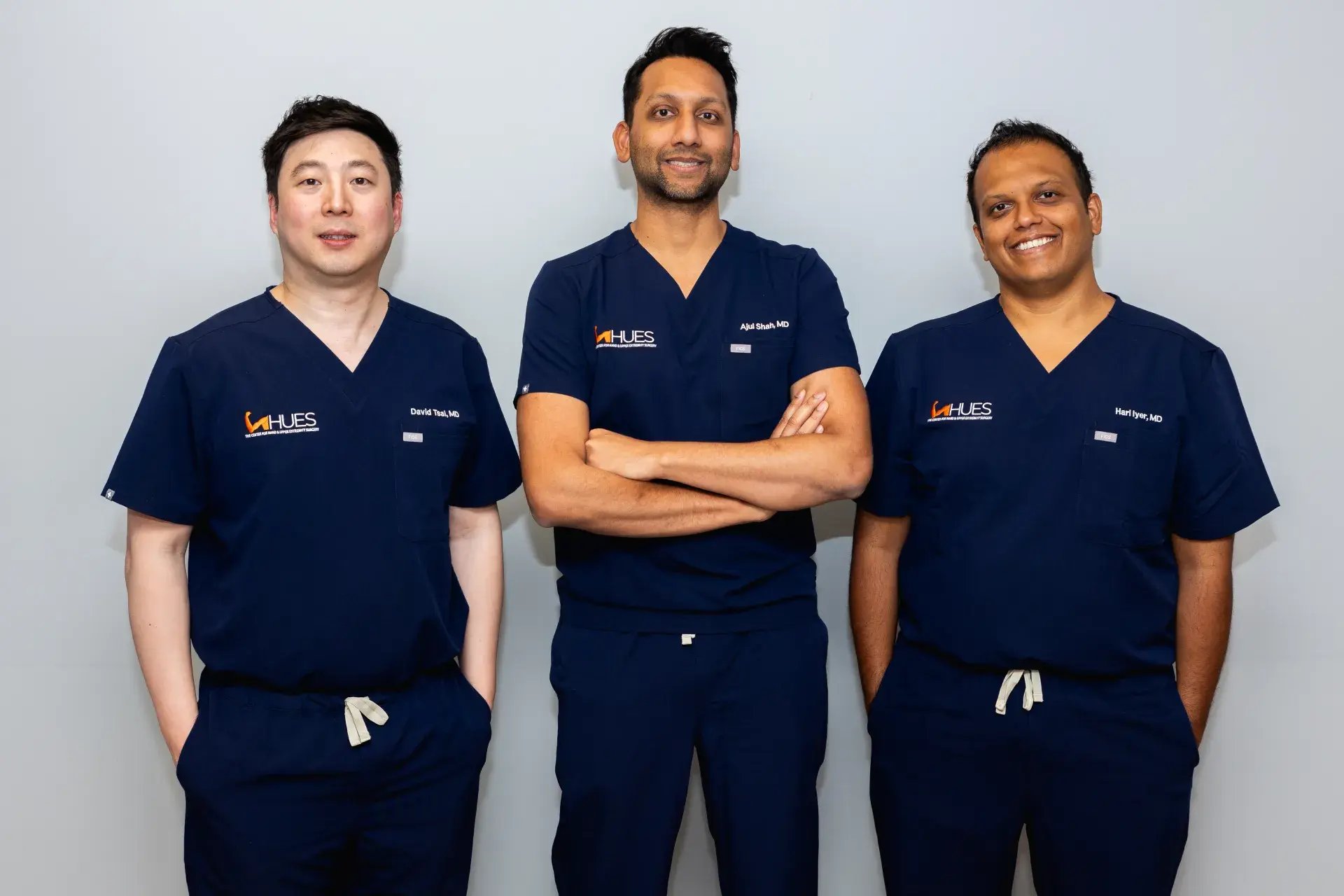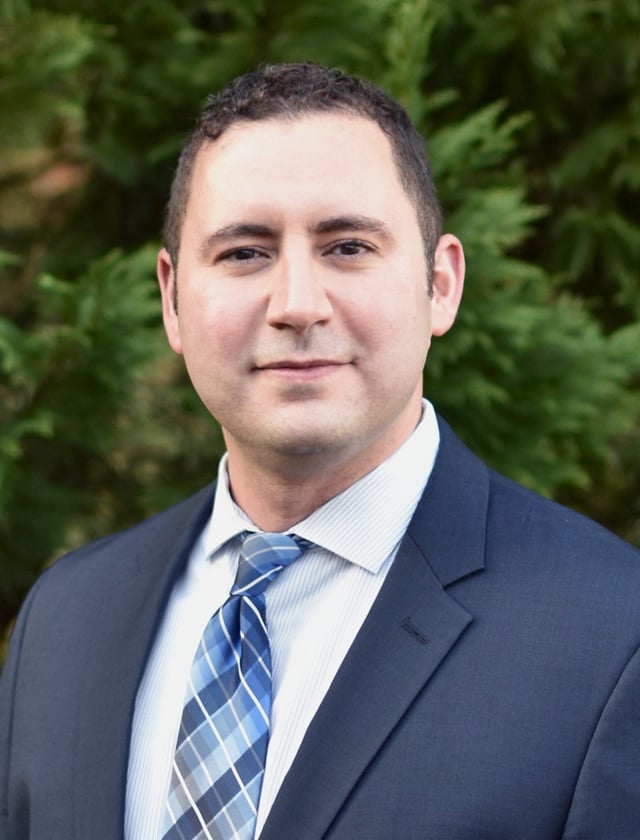Welcome To The Center For
Hand and Upper Extremity Surgery
Hand and upper extremity injuries can significantly impact your life. We are here to offer hope and healing with comprehensive, highly specialized treatments that can restore functionality, movement, and independence.
As Seen In



We accept most major insurances.


Coverage varies by plan type. Please call 833-598-2417 to confirm if your specific insurance plan is accepted.
What Sets Us Apart
The Center for Hand and Upper Extremity Surgery specializes in advanced surgical techniques for relieving pain and restoring function of the hand, wrist, elbow, and shoulder due to ailments of arthritis, limb loss, traumatic injuries, failed past surgeries, nerve and tendon injuries, and nerve compression syndromes. When left untreated, problems affecting the upper extremities could lead to impairments in function and chronic pain, significantly impacting a patient’s quality of life. Our multidisciplinary, patient-centered approach to treatment allows us to provide patients with superb outcomes.
World-Renowned Upper Extremity Surgeons
Our dedicated team of providers includes hand surgeons and finger surgeons with sub-specialty expertise in hand and upper extremity surgery and microsurgery. Dr. Ajul Shah and our hand surgeons are at the forefront of research and surgical innovation. They bring this expertise, along with a wealth of compassion, to each upper extremity surgery they perform.
Hear What Patients Say About Us


Last December, I had to go to the ER at Capital Health due to a fractured hand. Upon discharge and confirmation that I would need surgery as soon as possible, they referred me to Dr. Tsai. I had to do some research on him and was impressed by his credentials, so I had high confidence that I’ll be fine. When I met him the first time, he patiently explained the different options that they may perform to “fix” my hand. His attendant was also accommodating in providing information about what to expect before, during, and after the medical procedure. My surgery went without any problems, and I am very impressed with the applied surgical technique. He did mention that his approach will quicken the healing process to about a few weeks compared to months when doing the “usual” way. Five weeks after my surgery, I was cleared of any physical restrictions and was back doing activities as if I didn’t break any bone, thanks to Dr. Tsai’s expertise.
Xerxes M.


I really recommend Dr. Iyer. He genuinely care[s] for his patients. Thank you so much, Dr. Iyer [for] helping me. Very knowlegable doctor. Help[ed] me a lot to regain my motion. Broke my elbow and had surgery in India about 6 months ago. I lost 90% of palm up and palm down motion due to surgery in my elbow within 1 month. After visiting him, he found out that pins were blocking my motion. He performed surgery [to] remove pins. He helped me get my motion back about 95% within 2 months after having 2nd surgery. Explain[ed] really well how he is going to operate on me. He guided me [with] correct exercises I needed. He inspired me to regain my motion, [kept] track of my all progress with my therapist. His staff is really friendly and helped me with all paperwork I needed for work.
Priyanka S.


I was treated by Dr. Shah this past April for an injured index finger.I had long neglected this injury and now the finger was extremely swollen, painful, and non-functioning. Dr. Shah diagnosed the injury with confidence , patience and precision and prescribed a course of physical therapy. In one consultation I went from total despair to a sense that my injury was treatable without major surgery. The physical therapy was at times quite painful as he predicted. However within six weeks I was well on the road to recovery. I have only gratitude and respect for Dr. Shah and his staff
Brian F.


I’ll start by saying Dr. Ajul Shah is a surgical genius and wonderful person! I broke my 4th metacarpal bone in 3 places in my right hand during handstand walking in a CrossFit competition. Not only was I tremendously concerned about returning to working out, but was in fear of even just normal hand usage. Dr. Shah’s supreme surgical skill has enabled me to get back to doing handstand push ups, pull ups, lifting, and successfully competing! He also provided me with the most highly skilled Occupational Therapist. They were an amazing team focused on my health and healing. Even more important is his personality – he gets to know you as a person, not a patient. He truly cares. He’s in constant communication, thoroughly explains everything, and makes himself accessible for any question, concern, and even appreciated when I would share my workout videos!
Jackie B.


Dr. Ferro has excellent bedside care and attentiveness to her patients! Makes you feel very comfortable! Listens intently and will not rush you. I have had nerve blocks and steroid injections before several times; but my experience with Dr. Ferro by far has been the best experience and best results!
Jeffery N.


Dr Tsai provided me with excellent service. He talked with be before and after surgery to ensure I properly understood everything He answered all of my questions and addressed my concerns. His staff was absolutely wonderful. I highly recommend Dr. Tsai!!
Susan B.


I had a wonderful experience with Dr. Tsai. He and his staff are extremely professional and took the time to explain the entire process to me.
Barbara J.


Not only did Dr. Iyer get rid of my carpal tunnel, [he] also operated on my special needs daughter. He solved both of our needs, and his bedside manner is exceptional. He is the doctor to seek out for your upper extremity surgical needs.
Jayne M.


Dr. Rabinowitz performed hand surgery for me. He was kind and professional, and I am very happy with his care. I would highly recommend him.
Anonymous


Dr. Rabinowitz is personable, answered all my questions with patience and understanding towards all my care. I would highly recommend him to others with hand issues.
Anonymous


My daughter saw Dr Rabinowitz in the ER for an amputated finger injury she sustained in school. He was excellent. His bedside manner and level of expertise was outstanding. She had several follow up visits at his office and he was very patient, attentive and reassuring throughout the whole process. I am grateful he was able to care for my daughter during this stressful time. He is an excellent surgeon and kind person.
Anonymous


From my very first consultation to my post op visits Dr Peter and his staff made me feel secure and comfortable. They took their time to explain everything to me. From working with the insurance company to answering my questions and concerns. Super super friendly staff both in office and surgery center. I would definitely be recommending this place to anyone I know who needs a plastic surgeon. Thank you all for being caring, considerate and super understanding. The best place ever!!!!!
Ris T.


When I first met Dr. Yazid, he put his hand I out to shake mine, and that was it. Rarely nowadays do doctors to that. He is straight up, matter of fact and very informative on what he is going to do. Wonderful bedside manner and whitey sense of humor. At my post operative visit he could see I was, well, scared and extremely anxious. Again, he was kind, caring, compassionate and listened to what I had to say. His skill as a reconstructive surgeon is amazing. I will be seeing him again for additional procedures. I am very pleased he was referred to me by my orthopedic/trauma physician.
Karen C.


Dr. Yazid is an awesome Doctor and a definite credit to his profession. He took the time to explain the procedure and answer all my questions. I am very happy with the surgery he performed and would totally recommend him to anyone who wants a intelligent, caring Doctor.
Jennifer T.


One of the best doctors I have ever met in my Life. I recently had few visits with Dr. Yazid with my mom, and every time I saw him he was very passionate, Caring, professional and very detailed about any procedures you might need to go through. Not like some of today’s Doctors that all they try to do is rush you and go to the next patient. The rest of the office staff are excellent as well. Office is always neat and Clean.
Arjanit M.


Dr. Andrawes is a highly skilled plastic surgeon who expertly repaired a large wound due to skin cancer surgery. He is patient and kind. Every appointment was on time. I highly recommend him.
Karen


Each visit to his office was always on a timely fashion... receptionist and his assistance always had warm greetings.... Dr. Andrawes is a caring doctor. Would definitly recommend him to others.
Anonymous


Best experience with a doctor and their staff in a long time. Every appointment was on time and professional. The front desk women were extremely helpful as was the rest of the staff. Surgery went smooth and all my follow ups have been great. I would recommend this practice to any of my friends and family. Thank you for everything because of your team i’ll be playing music again in no time.
Scott A.

Find a Hand Surgeon
Your upper extremities are essential in performing day-to-day functions. If you have suffered an injury and are experiencing pain and frustration, we are here to help. We’re proud to bring our expertise to each of our patients.
Areas of Expertise
We are dedicated to providing advanced treatments for injuries and disorders affecting the upper extremities, consisting of the shoulder, elbow, wrist, and hand.
Arthritis of Hands, Wrists, Arms, and Shoulder
Chronic Pain in Hand
Hand & Upper Extremity Fractures
Nerve Injuries
Nerve Compression Syndromes
Tendon Injuries & Lacerations
FAQs
What type of tendon injuries do you treat?
Your tendons connect the hand and forearm muscles to the finger and wrist bones, making them crucial for performing routine tasks. We offer advanced surgical procedures to alleviate common tendon injuries, such as tendonitis, tennis elbow, flexor and extensor tendon injuries, and De Quervain's tenosynovitis.
What are symptoms of nerve compression syndrome?
When the nerves of the arm and hand are injured or compressed, movement can become difficult and painful. We treat various nerve compression syndromes, such as carpal tunnel, as well as brachial plexus injuries.
Do broken bones, including wrist, hand, and finger fractures, need surgery?
Though broken bones often heal on their own, certain injuries may need surgery to properly heal. Our surgeons in NJ offer treatment for complex distal radius fractures and metacarpal fractures to ensure your bones return to their correct position and function normally.
What is toe-to-finger transplant surgery?
Accidents and trauma can sometimes result in life-altering injuries, such as losing a finger or part of the hand. We offer advanced hand reconstruction surgery and finger reconstruction surgery, including replantation or reattachment and toe-to-finger transplant surgery.
What is the best treatment for arthritis?
Arthritis causes pain and stiffness in the joints, often worsening with age. When joint pain is severe, often due to arthritis, hand surgery may be an option for certain patients. We offer joint denervation surgery to alleviate chronic joint pain so patients can feel good again.
What is targeted muscle reinnervation?
Amputation of the arm or hand causes many changes in a patient’s life, including functional limitations, social and psychological issues, and severe phantom pain. We’re proud to offer an advanced surgical procedure known as targeted muscle reinnervation (TMR), which transfers nerves to restore muscle function.
Specialized Care for Complex Conditions—Now with Broader Access.
Whether you're navigating hand weakness, nerve pain, or upper extremity surgery, we make it easier to get the care you need.
We accept Aetna, UnitedHealthcare, Blue Cross Blue Shield, Cigna, and Horizon NJ Health insurance plans. Click here for the full list.
Call today to verify coverage and schedule your consultation.





-1.jpeg?width=1210&height=1591&name=Dr-%20Peter%20Andrawes%20Headshot%20(1)-1.jpeg)




